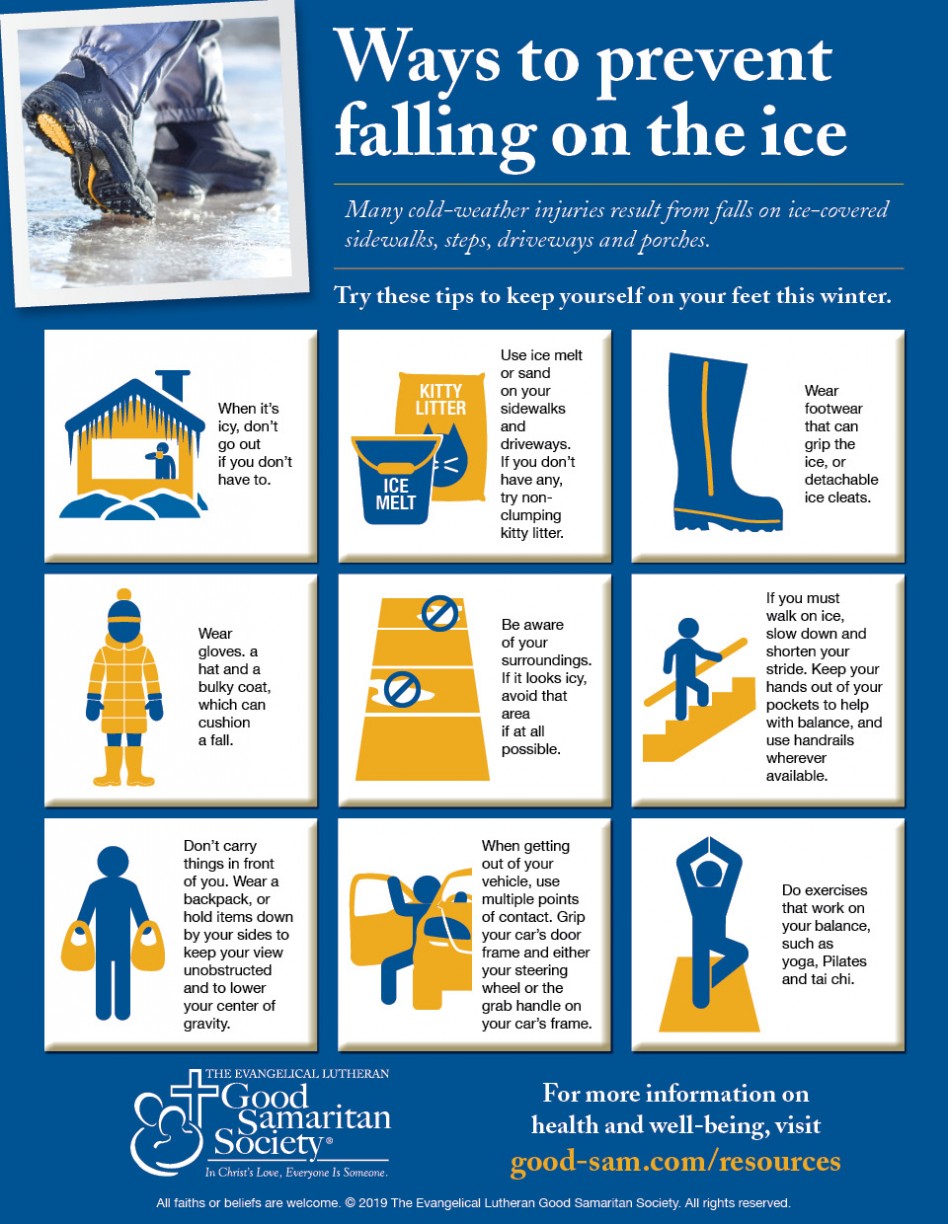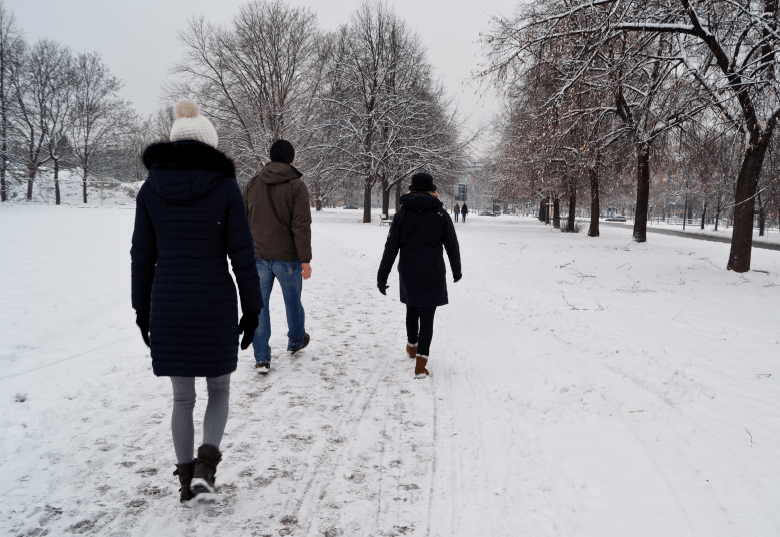Winter has settled in, and this time of the year can also bring an increase in injuries caused by falls, slips and trips.
Reducing winter falls begins with prevention
These tips are from the National Institute on Aging:
- Use sand or ice melt to keep stairs and walkways clear of snow and ice.
- Ensure adjoining handrails are secure.
- Wear non-skid, rubber-soled, low-heeled shoes, or lace-up shoes with non-skid soles that fully support your feet.
Walk like a penguin
If you must walk on ice or slippery snow, experts advise taking your cues from the way penguins shuffle:
- Spread your feet slightly
- Keep your center of gravity over your front leg
- Take small steps
- Waddle to keep yourself upright
- Keep your hands out of your pockets
If you fall, remember to tuck your chin to prevent landing on your head.
How does the weather affect your health? Take our quiz
Enlarge

Good Samaritan Society infographic by Kristy Anderson.
Sometimes, the places we spend the most time can be dangerous. We asked Clayton Van Balen, Sanford Health employee health medical director, to talk about fall prevention in the workplace.
Fall prevention at work
According to the most recent data from the U.S. Bureau of Labor Statistics, 18% of the 1.2 million nonfatal work injuries resulting in days away from work in 2020 were related to slips, trips, and falls. These specific injuries can lead to concussions, sprains and strains, as well as fractures of ankles, hips, pelvis, spine and wrists.
To help prevent these injuries, be aware of the hazards that increase the risk of slips and falls. For example, if there is snow or water on the floor, clean it up or report it right away. If there is poor visibility due to a burned-out light, make the appropriate staff aware.
Other common areas where falls, slips and trips occur are sidewalks and parking ramps. Encourage your co-workers to wear proper footwear, and apply sand and salt to the areas as frequently as needed. It’s also helpful to recommend using appropriate passageways.
“One of the most significant ankle fractures I have seen occurred when an individual cut across the grass, rather than using the sidewalk,” Van Balen said.
The benefit of everyone looking out for potential hazards is a safer place to work. An action that may only take a minute to perform may save an employee months of recovery.
Read more
- 5 tips for keeping kids safe this winter
- Preparation key to preventing injury while shoveling snow
- Home safety tips help you age in place
…
Posted In Health Information, Healthy Living, Senior Services, Workplace Health
